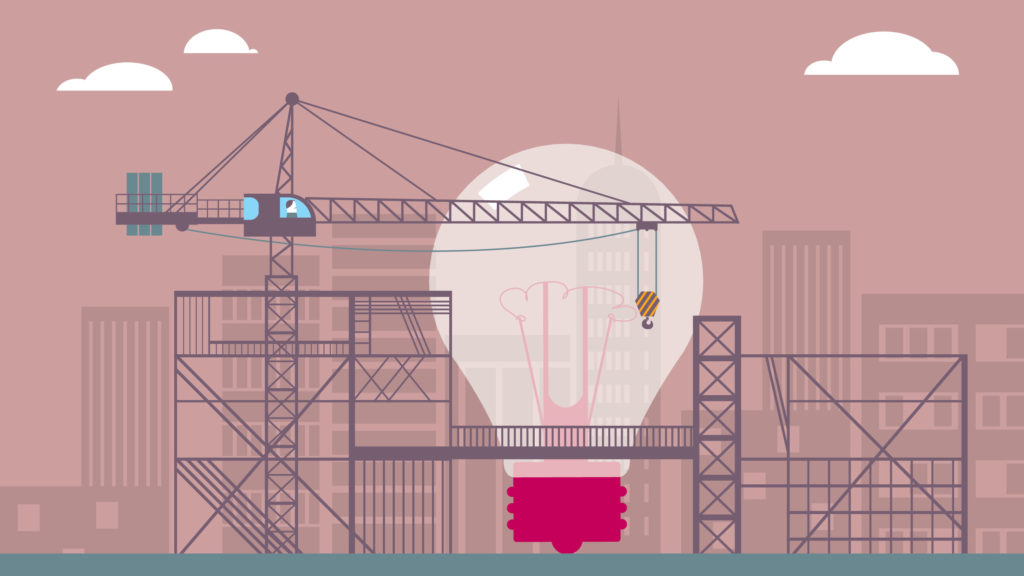
It’s often said that truly innovative companies don’t follow a “big bang” approach to innovation – rather, they have a strong innovation culture that continuously evolves their business. If you’re struggling to reach that goal, it can be useful to go back to basics and orient your efforts around an innovation framework.
But with so many options available, how do you know which is the best framework for your company — and how do you implement it?
This article is designed to give you a quick introduction to the most common types of innovation framework and provide you with five helpful tips in rolling out the model of your choice.
What is an Innovation Framework?
An innovation framework sets the parameters, processes, and practices that foster innovation. Because innovation is a complex, cross-functional endeavor, the framework applies organization-wide. It provides a sustainable structure for innovating in line with corporate strategy and ultimately creating tangible business outcomes.

Innovation Types
To develop your innovation framework, it’s important to understand the types of innovation. Beyond creating new products and services, companies innovate in many ways to gain a competitive advantage. Here are 10 types based on the work of Doblin, a Deloitte business.
- Business Model Innovation Transforming how the business creates value via new profit models, delivery channels, or revenue streams. The late Clayton Christensen of Harvard Business School coined the term “disruptive innovation” to describe this category.
- Network Innovation: Cultivating relationships with external partners. McKinsey calls this “Extend” – one of its eight essentials of innovation – where collaborators not only develop new ideas but also share expenses and seek faster routes to market.
- Structural Innovation: Organizing and aligning talent as well as assets in unique ways, as stated by Doblin. Two examples could be flatter hierarchies and agile teams.
- Process Innovation: Operating via superior methods or patented/proprietary approaches that form the “core competency” of an organization, according to Doblin.
- Product Performance Innovation: Developing new products or updates to existing products and services.
- Product System Innovation: Bundling or integrating products and services together to add value. This can include internal offerings or those from other companies.
- Service Innovation: Enhancing customer support of products and services. This can range from improving the customer experience to ingenuity in solving customer issues.
- Channel Innovation: Delivering products and services in new and diverse ways.
- Brand Innovation: Representing the company via novel methods that resonate with prospects and customers.
- Customer Engagement Innovation: Fostering deeper relationships with customers. This goes beyond support to facilitating communities of customers or creating special experiences/opportunities for them.

5 Innovation Framework Tips
Now that you are familiar with the 10 types of innovation, here are five tips to help develop an innovation framework based on your organization’s needs and goals.
Create an innovation strategy
Determine what your company is trying to achieve with innovation, aligned to business objectives. Your innovation and business strategies are not mutually exclusive but should be integrated as part of core business planning. Tied to individual and company performance, this sets the foundation for long-term innovation.
This step is crucial to building a solid innovation framework. A disjointed approach to innovation often results in misguided efforts, conflicting priorities, and turf wars over scarce resources. Senior leadership must set the innovation strategy and rally the organization around it.
Analyze and select your innovation types
Based on your innovation strategy and the organization’s goals, decide which innovation type or types are best. A mix often works best, according to Doblin: “…all great innovations, throughout history, comprise some combination of these ten basic types.”
For example, your current innovation strategy could be to increase revenues by elevating existing products while improving the customer experience. You could build your innovation framework around some combination of service, customer engagement, brand, product system, and product performance innovation.
Establish or understand your means of innovation
Many organizations focus on internal knowledge and talent for innovation (e.g., R&D departments, innovation labs, internal start-ups, crowdsourcing). External approaches include customer input, venture capital arms, partnerships, M&A activity, and other practices.
Use your innovation strategy to guide you here. Knowing what the business objectives are and the types of innovation required, you can determine if the organization is using the right vehicles or if it needs to introduce new ones. Your innovation framework should then guide and support these methods as well as the people using them.
Build your processes and systems
Depending on the methods of choice, you’ll need to set up consistent ways to spur and sustain innovation. For example, your company may prioritize internal innovation. Executives may aspire to “open innovation,” where the entire company is involved in coming up with great ideas and solutions to internal issues.
You can support this by implementing the right systems and processes in your innovation framework. Crowdsourced innovation programs, for instance, solicit input from all employees regardless of which department poses a need or challenge. These systems can provide consistent processes to submit ideas and qualify them. For more on this topic, read the article “3 Ways to Cultivate Employee Engagement Through Crowdsourcing.”
Develop the capacity for successful delivery
Your innovation framework must also enable fast execution of the best ideas. This includes prioritizing innovation initiatives based on risk, ROI potential, resource constraints, strategic fit, and other criteria. It also includes reducing bureaucracy and speeding decision-making.
The framework must prompt enough governance to keep employees and teams innovating on strategy, but not so much that it stifles them. You can motivate and empower teams by linking the innovation strategy and initiatives to their daily work and facilitating their choice of work methodologies. This enables them to tackle innovation in their own ways and do their best work. Finally, celebrate successes.
Innovation Framework Evolution
Use these five tips to develop an innovation framework that supports creative, on-strategy construction and discovery in your organization. Yet recognize that to sustain innovation, your framework must be malleable. Companies often need to change business and innovation strategies to address competitive threats, disruptions, changing regulations, escalating customer demands, increasing market uncertainty, and more. You will be ready.
For a look at market trends and best practices in innovation, download the Planview Planview IdeaPlace 2019 State of Crowdsourced Innovation Report.




